I am from a small village in Etim Ekpo Local Government Area in Southern Nigeria. It was awesome to spend the Christmas/New Year holidays with my family in the village. One of the benefits of spending time in the village is that we have easy access to pure undiluted fresh foods straight from the farm.
Little wonder our forefathers lived strong and healthy for many years. My grandmother for instance, lived for 120 years without visiting the hospital, even for a day.
My father loved farming, and he ensured we all learned how to farm. And so, on this memorable day, I joined my mother on the farm by 6am to harvest Sweet-yam and Cocoyam.

Part of my New Year resolution is to make frequent visits to my village, eat and stay healthy.
After the harvest, I prepared boiled Cocoyam and Sweet yam with Vegetable Sauce made with fluted pumpkin leaves and African garden egg- all harvested from our farm.
Please find the recipe and photos below;
Required;
Sweet-yam
Coco-yam
African garden egg
Fluted pumpkin leaf
Pepper
Crayfish
Palm oil
Onions
Seasoning
Peel Sweet yam and Coco-yam, wash thoroughly and boil in salt water. You can also boil it with the peel so it doesn’t become too soft. Ensure you peel off the roots (which is what i did in the photo below).
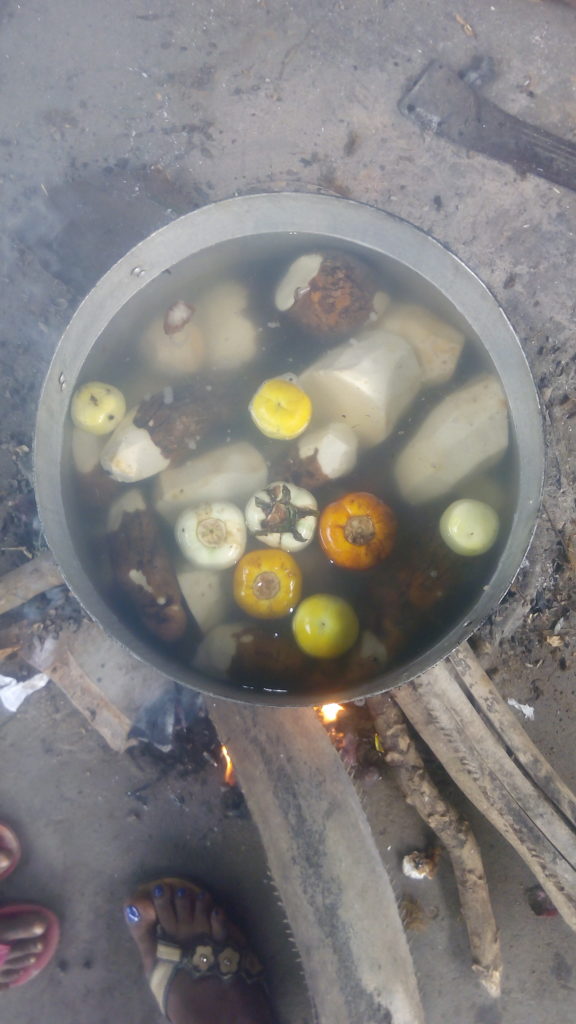
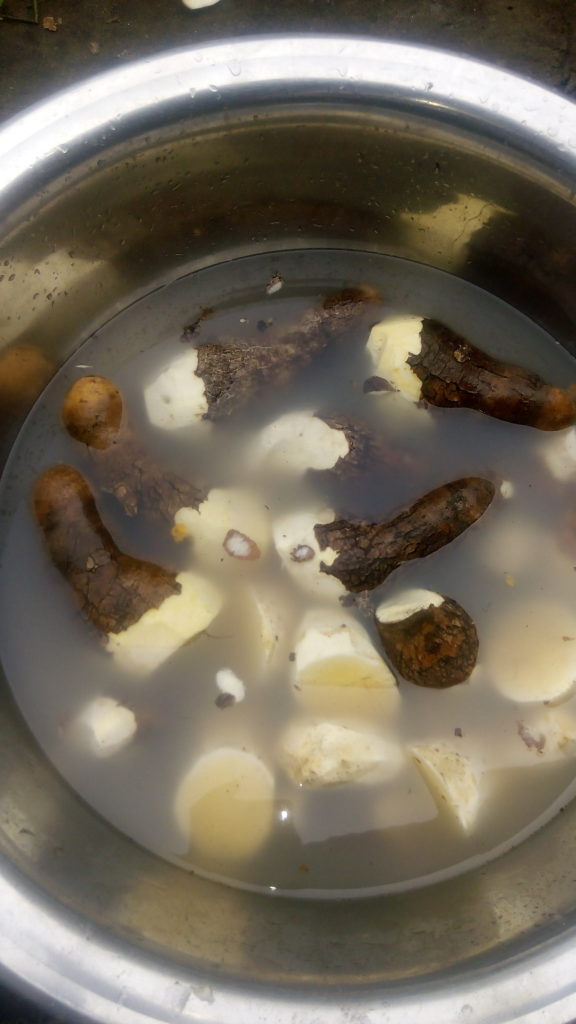
Boil garden egg till soft, then pound in mortar (you can boil along with the sweet yam)
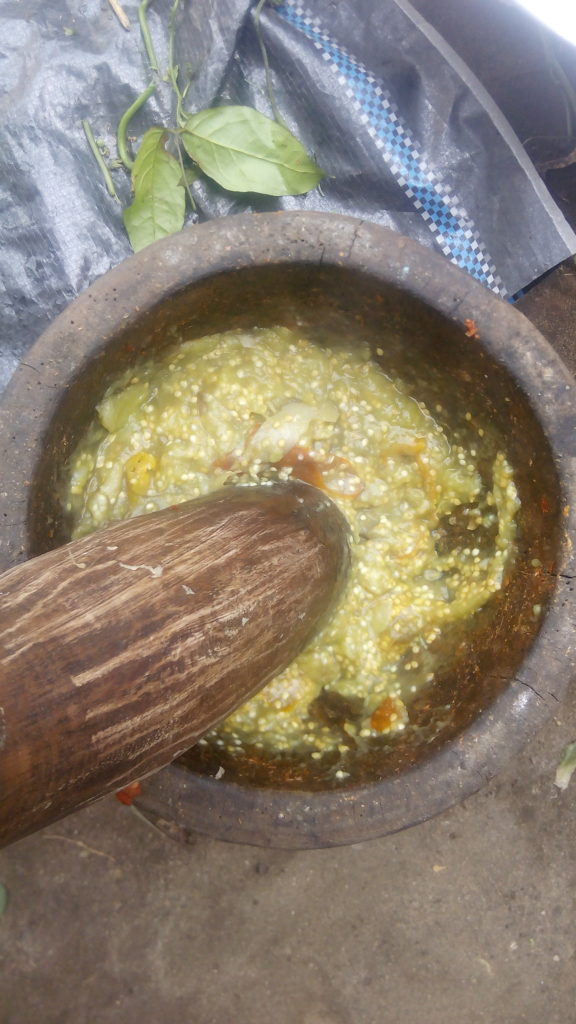
Prepare leaves and chop them.
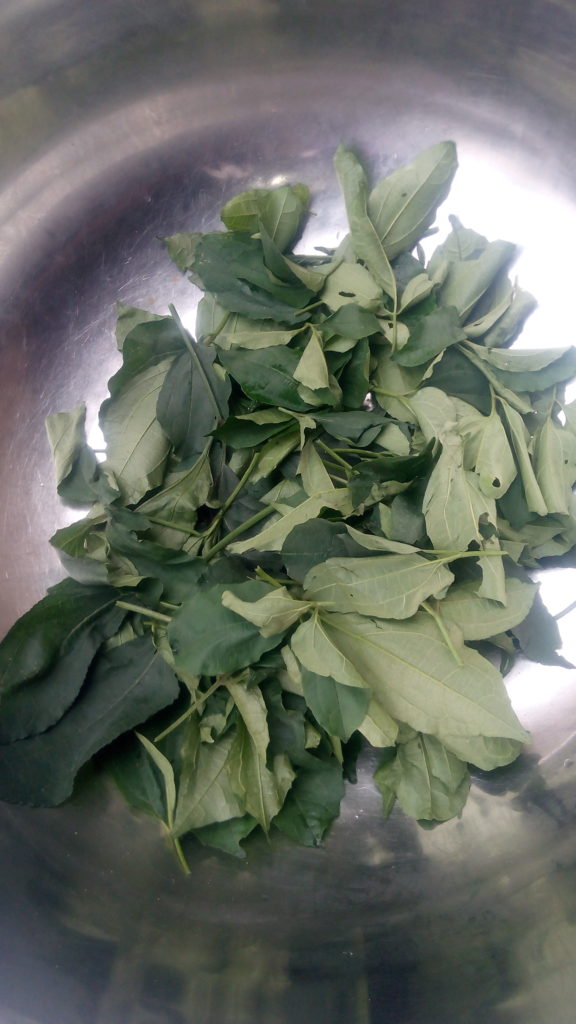
Heat palm oil, saute onions, add garden egg, seasoning and allow to steam then add leaves, cook for 2 minutes and there you have it!
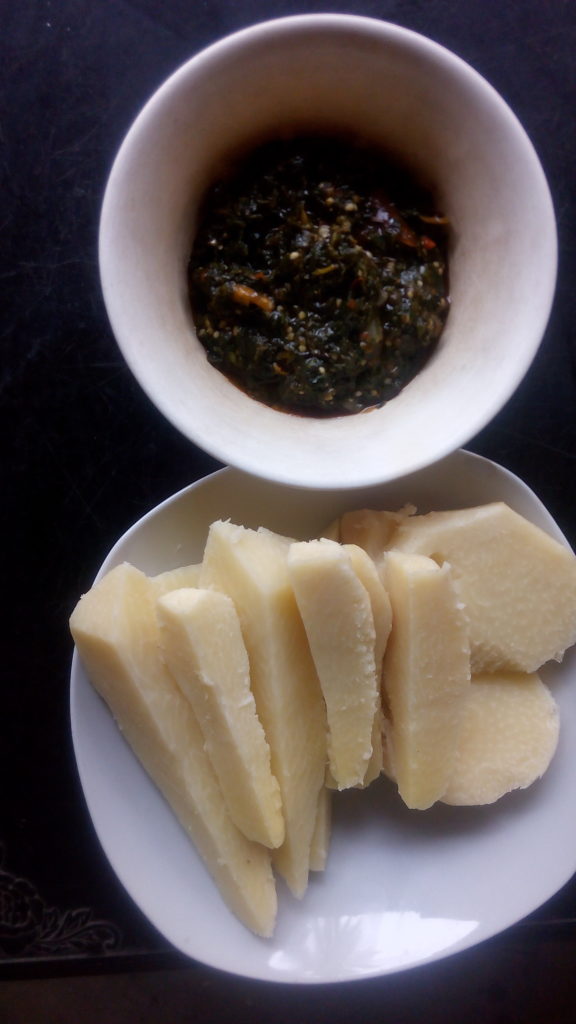
We also prepared Garri. Garri is made from cassava tubers and it is popularly relished with different types of soups.
Here is the process:
- Harvest cassava tubers
- Peel off the back of the cassava tubers and wash thoroughly
- Cut the tubers into medium sizes and grind. This can be done manually (by grating) or the easy way by grinding machine.
- After grinding, pack in porous bags and drill it dry for one or two days.
- Using a wide sieve, sieve off the fine cassava powder from other particles
- Then, using a wide frying pan, fry the powder in reasonable portions until it becomes very dry and crisp.
- Store in a dry place.




